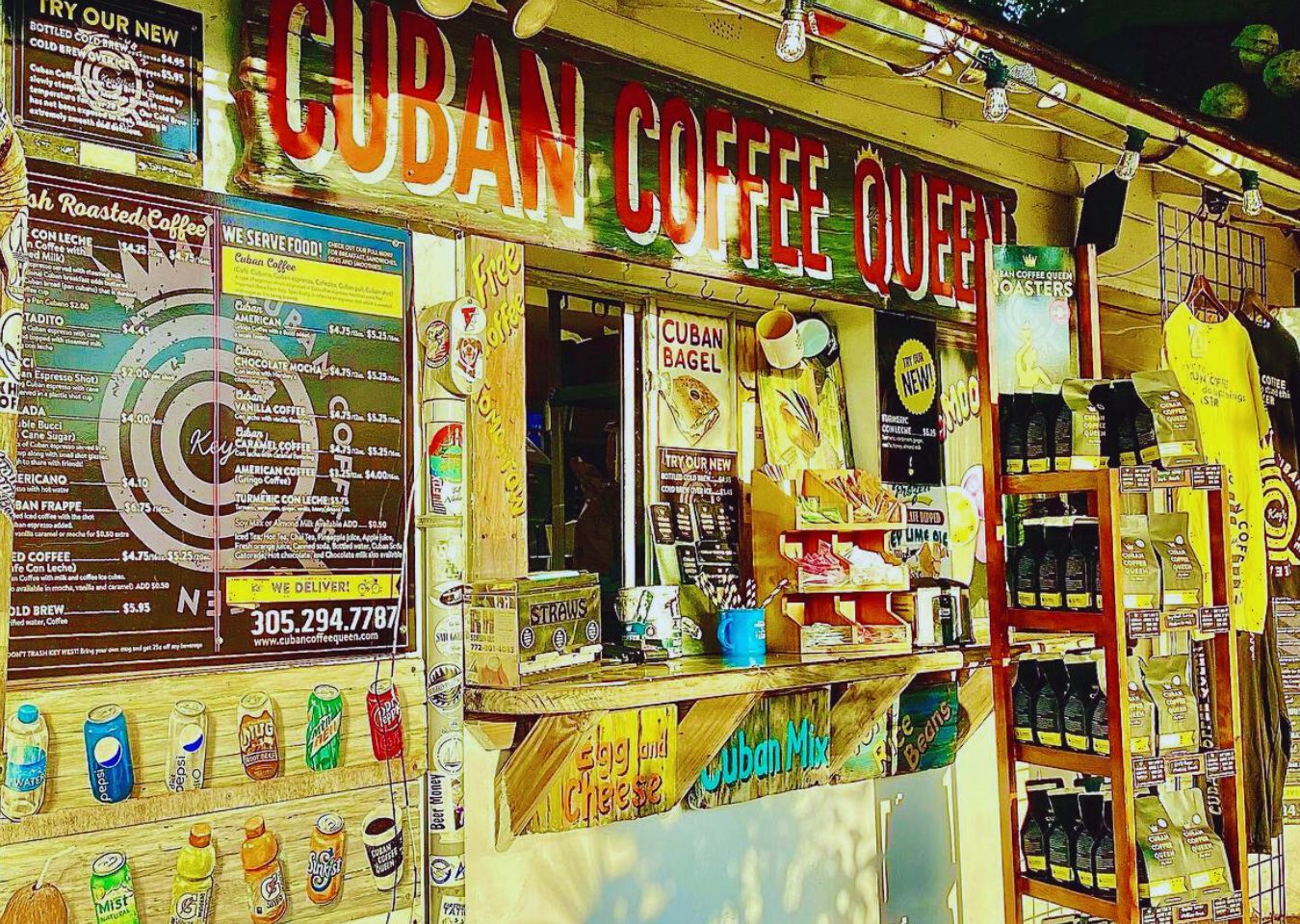
Exploring Cuban Coffee Culture: Cuban coffee, often referred to as “cafe Cubano,” offers a unique journey through flavor, history, and culture. This comprehensive exploration delves into its rich history, the art of cultivation and roasting, the diverse flavors, and its integral role in Cuban culture.

The Rich History of Cuban Coffee
Origins of Coffee in Cuba
The captivating story of Cuban coffee begins centuries ago when coffee was first introduced to the island. Though the precise date remains a subject of historical debate, it is widely accepted that coffee cultivation took root in Cuba during the 18th century. The fertile soil and favorable climate of Cuba provided an ideal environment for growing high-quality Arabica beans.
Geography, Climate, and Coffee in Cuba
The geographical diversity and climate variations across Cuba have a profound impact on the exceptional quality of its coffee. Regions like the Sierra Maestra, with their mountainous terrain and specific microclimates, are renowned for coffee cultivation. The unique combination of altitude, rainfall, and temperature fluctuations contributes to the distinctive flavors found in Cuban coffee.
Cuban Coffee Through the Centuries
The history of coffee in Cuba is a tapestry woven with stories of resilience and innovation. From its humble beginnings, coffee cultivation expanded across the island. Over the centuries, Cuban coffee earned a reputation for its quality and distinctiveness, becoming an essential part of the nation’s culture and identity.
The Art of Growing Cuban Coffee
Cuban Coffee Varietals and Terroir
Cuba boasts a diverse range of coffee varietals, each with unique characteristics and flavor profiles. Renowned Arabica varieties such as Typica, Bourbon, and Geisha thrive in Cuba’s diverse microclimates, offering a wide spectrum of flavors, from fruity and floral to nutty and chocolatey. The volcanic soil and high-altitude regions of Cuba contribute to the complexity and vibrancy of the coffee.
Sustainable Farming for Coffee
Coffee farmers in Cuba are committed to sustainable and environmentally friendly farming practices. Many coffee plantations are certified organic, ensuring fertile soil and chemical-free cultivation. This dedication to sustainability preserves Cuba’s natural beauty while enhancing coffee quality.
The Coffee Harvesting Process in Cuba
The process of harvesting coffee in Cuba is labor-intensive and meticulous. Skilled coffee pickers selectively hand-pick ripe cherries, ensuring only the finest cherries are chosen. This attention to detail guarantees consistent quality. After harvesting, the cherries undergo a careful processing stage, including washing, pulping, and fermentation.
The Unique Cuban Coffee Roasting Process
Sun-Drying and Natural Processing of Coffee
One of the defining characteristics of coffee in Cuba is its natural processing method. Coffee beans are sun-dried with their cherries intact, preserving the intrinsic flavors of both the coffee and its terroir. This process contributes to the unique and nuanced flavor profile, setting it apart in the world of coffee.
Hand-Selected Coffee Beans
The exceptional quality of coffee is also attributed to the painstaking selection of beans. Expert coffee producers meticulously hand-select the finest beans, discarding any that fall short of the highest standards. This meticulous approach ensures that each cup delivers a consistently rich and flavorful experience.
Microclimate and Coffee Quality
Coffee’s distinctiveness owes much to the microclimates of the island. The interplay of altitude, temperature variations, and humidity in various regions leads to a diverse array of flavor notes. As a result, coffee enthusiasts can savor a broad spectrum of flavors, ranging from citrusy and bright to earthy and robust.
Flavors and Aromas of Coffee
Tasting Notes: A Sensory Journey
Tasting coffee is an unparalleled sensory experience. With each sip, you embark on a journey through a symphony of flavors and aromas. Cuban coffee is celebrated for its distinctive tasting notes, often including hints of cacao, hazelnut, and brown sugar. These flavors harmonize to create an indulgent and balanced coffee experience.
Comparing to Other Varietals
While Cuban coffee boasts a unique flavor profile, coffee enthusiasts often relish comparing it to other renowned coffee varieties. These comparisons unveil subtle distinctions in taste, body, and aroma between Cuban coffee and coffee from other regions, such as Colombia, Ethiopia, or Brazil.
Cuban Espresso: The Heart of Coffee Culture
Cuban espresso, locally known as “Cafecito,” is the beating heart of coffee culture. It is a concentrated and bold espresso shot, often sweetened with sugar and prepared using a traditional Moka pot. Cuban espresso embodies the essence of coffee culture.
Brewing Techniques
The Cafetera: Brewing at Home
The cafetera, or Moka pot, is an iconic element of coffee culture and the preferred method for brewing Cuban espresso. This traditional stovetop coffee maker is instrumental in creating the beloved cafecito, a small but potent cup. Brewing at home with a cafetera allows you to savor the flavors with every sip.
The Art of Brewing Espresso
Brewing the perfect cafecito requires finesse and an understanding of the ideal coffee-to-water ratio. The result is a concentrated shot of coffee that embodies the balance of bitterness and sweetness, all expertly crafted in a Moka pot.
Cuban Coffee Rituals and Café Cubano
In Cuba, coffee is not merely a beverage; it is a cherished part of daily life. The preparation and consumption of coffee are steeped in tradition. Offering a cup of cafecito to a guest is a gesture of warmth and hospitality. Café Cubano, often served with a layer of frothy espuma, adds an extra dimension to the coffee experience.
The Role of Coffee in Cuban Culture
Cafecito: A Social Catalyst
Coffee, especially the cafecito, serves as a social catalyst that brings people together. Sharing coffee fosters a sense of community and connection.
Coffee and Traditional Cuisine
Coffee harmonizes beautifully with the rich and flavorful cuisine of Cuba. It pairs seamlessly with dishes like arroz con frijoles (rice and beans), tostones (fried green plantains), and pastelitos (pastries).
Coffee in Celebrations and Café Con Leche
Coffee also plays a significant role in celebrations and traditions. It is a staple at family gatherings, birthdays, and holidays. No Cuban celebration is complete without a cup of cafecito. Café con leche, a blend of coffee and warm milk, is a comforting and popular choice, especially in the mornings.
Challenges and Opportunities
Economic Factors Impacting the Industry
The coffee industry in Cuba, like many others, faces economic challenges. Factors such as limited access to resources, fluctuating global coffee prices, and restrictions on trade have posed obstacles to the industry’s growth. Despite these challenges, coffee producers remain resilient, committed to preserving the legacy of coffee.
Sustainable Practices
Sustainability is a growing concern in the global coffee industry, and coffee in Cuba is no exception. Many coffee producers have embraced sustainable farming practices, recognizing the importance of environmental conservation. These practices not only protect Cuba’s natural beauty but also ensure the long-term viability of coffee cultivation on the island.
Coffee in the Global Market
Cuban coffee’s unique flavors and historical significance have garnered international attention. While it is exported to various countries, its availability can be limited due to trade restrictions and high demand. Coffee enthusiasts around the world eagerly seek it to savor its exceptional taste and support the industry.
The Art of Pairing Coffee
Coffee and Cigars: A Perfect Match
For aficionados of both coffee and cigars, coffee pairs seamlessly with Cuba’s world-renowned cigars. The rich, earthy notes of coffee complement the complex flavors of cigars, creating a sensory experience.
Coffee and Desserts: A Sweet Symphony
Coffee also harmonizes wonderfully with traditional desserts and pastries. Pairing coffee with treats like flan, tres leches cake, or pastelitos de guayaba (guava pastries) creates a delightful contrast of flavors.
Fusion with International Cuisines and Non-Alcoholic Drinks
Coffee’s versatility extends beyond cuisine. It can be incorporated into various international dishes and beverages, including non-alcoholic drinks. For example, it can be used to enhance the flavors of chocolate desserts or to create coffee-based cocktails.
Bringing Coffee Home
Sourcing Coffee
For those eager to enjoy the flavors outside of Cuba, sourcing it can be a thrilling pursuit. While it may not be readily available everywhere due to trade restrictions, online retailers and specialty shops occasionally offer beans or blends. Exploring these sources can provide access to the treasures of coffee culture.
Brewing at Home: Moka Pot and More
Bringing the essence of Cuba into your home is a rewarding endeavor. To brew coffee at home, you will need a Moka pot, finely ground beans, and, if desired, sugar. With the right tools and a touch of inspiration, you can recreate the cafecito experience in your own kitchen.
Exploring Coffee Blends and Promo Codes
Coffee is not limited to single-origin beans; it also serves as a key component in blends. Blending coffee with other varieties can yield unique and delightful flavors. Exploring different blends that incorporate beans allows you to experience the versatility and complexity in new and exciting ways. Keep an eye out for promo codes to enhance your coffee experience.
Conclusion
Embracing the World of Flavors
In every sip, there exists a world of flavors, history, and culture. Coffee transcends borders and connects people through the shared joy of its consumption. The rich history, from its origins to modern-day challenges and opportunities, reflects the resilience and passion of those who cherish it.
As you explore the world of coffee, may you find delight in every cup, savoring the diverse and complex flavors that make it truly exceptional. Whether you sip it in the heart of Havana or in the comfort of your home, coffee invites you to embrace a world of flavors and discover the beauty of culture, where every cup is an adventure in taste.
Articles are always updated: <HERE>